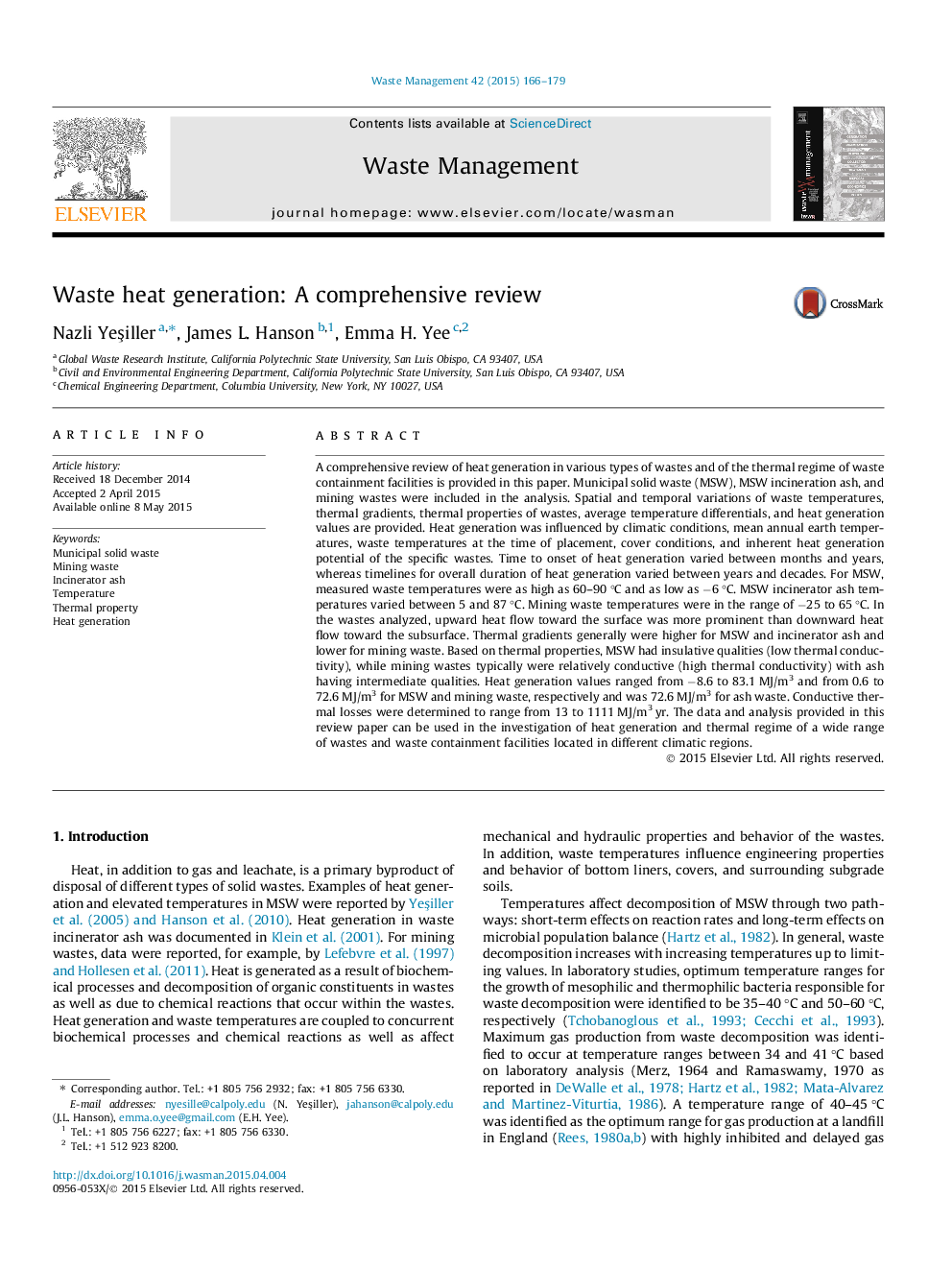| کد مقاله | کد نشریه | سال انتشار | مقاله انگلیسی | نسخه تمام متن |
|---|---|---|---|---|
| 4471287 | 1622643 | 2015 | 14 صفحه PDF | دانلود رایگان |
• Heat is a primary byproduct of land disposal of wastes.
• Significant heat is generated due to exothermic biochemical reactions in wastes.
• High and low temperatures are present with respect to soil and air temperatures.
• Heat generation is a function of waste type and climatic and operational conditions.
• Temperature and heat generation data can be used for analyses and numerical modeling.
A comprehensive review of heat generation in various types of wastes and of the thermal regime of waste containment facilities is provided in this paper. Municipal solid waste (MSW), MSW incineration ash, and mining wastes were included in the analysis. Spatial and temporal variations of waste temperatures, thermal gradients, thermal properties of wastes, average temperature differentials, and heat generation values are provided. Heat generation was influenced by climatic conditions, mean annual earth temperatures, waste temperatures at the time of placement, cover conditions, and inherent heat generation potential of the specific wastes. Time to onset of heat generation varied between months and years, whereas timelines for overall duration of heat generation varied between years and decades. For MSW, measured waste temperatures were as high as 60–90 °C and as low as −6 °C. MSW incinerator ash temperatures varied between 5 and 87 °C. Mining waste temperatures were in the range of −25 to 65 °C. In the wastes analyzed, upward heat flow toward the surface was more prominent than downward heat flow toward the subsurface. Thermal gradients generally were higher for MSW and incinerator ash and lower for mining waste. Based on thermal properties, MSW had insulative qualities (low thermal conductivity), while mining wastes typically were relatively conductive (high thermal conductivity) with ash having intermediate qualities. Heat generation values ranged from −8.6 to 83.1 MJ/m3 and from 0.6 to 72.6 MJ/m3 for MSW and mining waste, respectively and was 72.6 MJ/m3 for ash waste. Conductive thermal losses were determined to range from 13 to 1111 MJ/m3 yr. The data and analysis provided in this review paper can be used in the investigation of heat generation and thermal regime of a wide range of wastes and waste containment facilities located in different climatic regions.
Journal: Waste Management - Volume 42, August 2015, Pages 166–179
